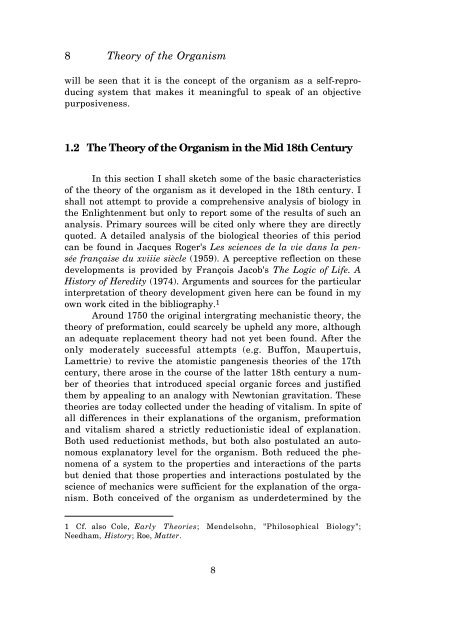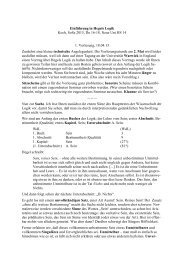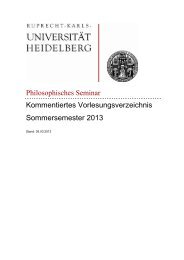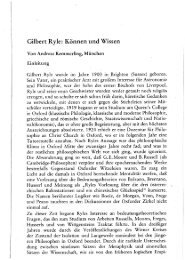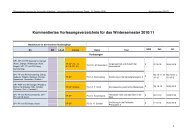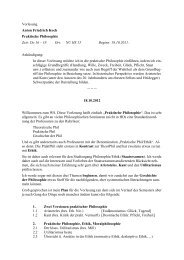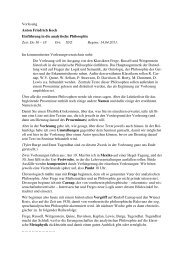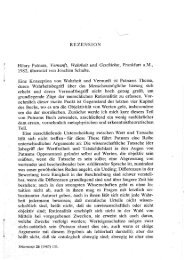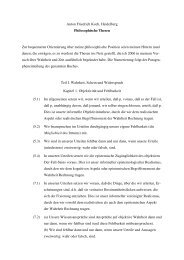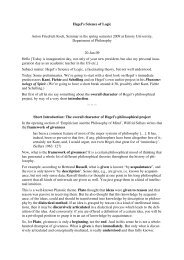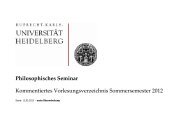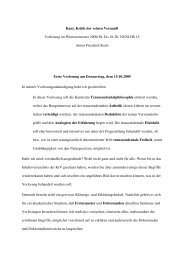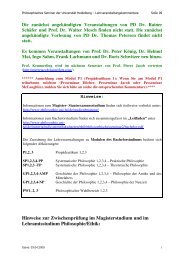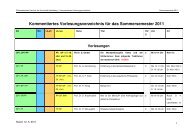KANT'S CRITIQUE OF TELEOLOGY IN BIOLOGICAL EXPLANATION
KANT'S CRITIQUE OF TELEOLOGY IN BIOLOGICAL EXPLANATION
KANT'S CRITIQUE OF TELEOLOGY IN BIOLOGICAL EXPLANATION
You also want an ePaper? Increase the reach of your titles
YUMPU automatically turns print PDFs into web optimized ePapers that Google loves.
8 Theory of the Organism<br />
will be seen that it is the concept of the organism as a self-reproducing<br />
system that makes it meaningful to speak of an objective<br />
purposiveness.<br />
1.2 The Theory of the Organism in the Mid 18th Century<br />
In this section I shall sketch some of the basic characteristics<br />
of the theory of the organism as it developed in the 18th century. I<br />
shall not attempt to provide a comprehensive analysis of biology in<br />
the Enlightenment but only to report some of the results of such an<br />
analysis. Primary sources will be cited only where they are directly<br />
quoted. A detailed analysis of the biological theories of this period<br />
can be found in Jacques Roger's Les sciences de la vie dans la pensée<br />
française du xviiie siècle (1959). A perceptive reflection on these<br />
developments is provided by François Jacob's The Logic of Life. A<br />
History of Heredity (1974). Arguments and sources for the particular<br />
interpretation of theory development given here can be found in my<br />
own work cited in the bibliography. 1<br />
Around 1750 the original intergrating mechanistic theory, the<br />
theory of preformation, could scarcely be upheld any more, although<br />
an adequate replacement theory had not yet been found. After the<br />
only moderately successful attempts (e.g. Buffon, Maupertuis,<br />
Lamettrie) to revive the atomistic pangenesis theories of the 17th<br />
century, there arose in the course of the latter 18th century a number<br />
of theories that introduced special organic forces and justified<br />
them by appealing to an analogy with Newtonian gravitation. These<br />
theories are today collected under the heading of vitalism. In spite of<br />
all differences in their explanations of the organism, preformation<br />
and vitalism shared a strictly reductionistic ideal of explanation.<br />
Both used reductionist methods, but both also postulated an autonomous<br />
explanatory level for the organism. Both reduced the phenomena<br />
of a system to the properties and interactions of the parts<br />
but denied that those properties and interactions postulated by the<br />
science of mechanics were sufficient for the explanation of the organism.<br />
Both conceived of the organism as underdetermined by the<br />
1 Cf. also Cole, Early Theories; Mendelsohn, "Philosophical Biology";<br />
Needham, History; Roe, Matter.<br />
8


